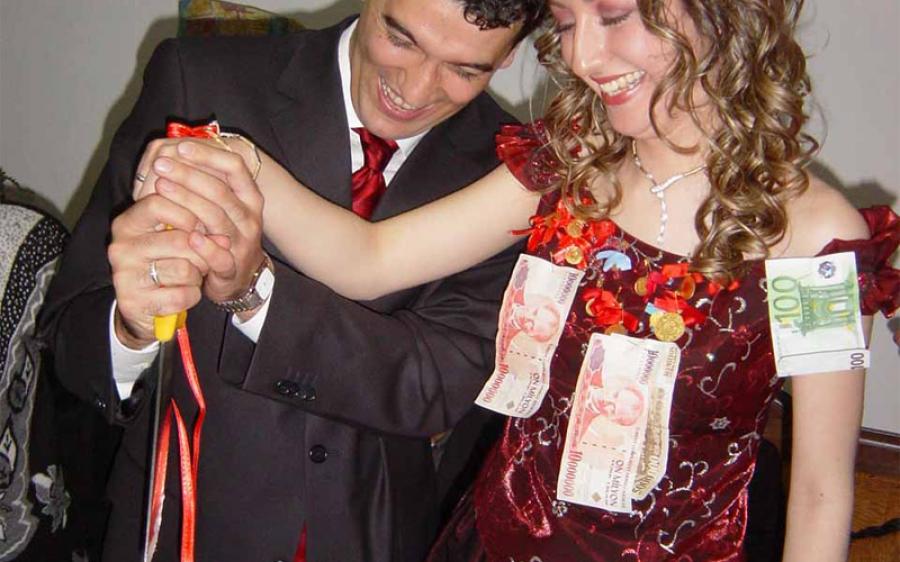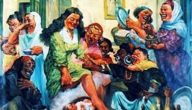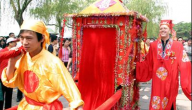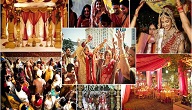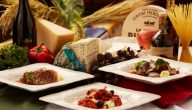عادات وتقاليد الزواج في تركيا بالانجليزي وماهي اغرب عادات وتقاليد الزواج في ايطاليا سنتعرف عليها من خلال هذه السطور.
محتويات المقال
Turkey
It is a transcontinental country mostly located on the Anatolian Peninsula in western Asia, and a smaller part on the Balkan Peninsula in southeastern Europe. Eastern Thrace, which is the European part of Turkey, separated from Anatolia by the Sea of Marmara, and the Bosporus and Dardanelles Straits. Istanbul, which straddles Europe and Asia, is the largest city in the country, while Ankara is the capital.
Customs and traditions of marriage in Turkey in English
The joys last for 40 days
The customs and traditions of marriage in Turkey differ from other countries, there you find the joys last for a period of no less than 40 days, and the joy is prepared long before that. The joys in Turkey are characterized by being expensive and far from the factor of “simplicity” as is the case in most Arab countries .
The weddings differ from one region to another in Turkey. For example, in “Anatolia” the weddings lasted for only three days, and in the past they were extended to forty days.
Stages of marriage in Turkey
Marriage in Turkey goes through several stages, and these stages are one of the most important marriage customs and traditions in Turkey and cannot be violated, so the beginning must come from the “groom” where he goes with his family to ask the bride from her family, and he must bring with him the elders and the older person in His family, and often goes to sermon the bride on Thursdays and Sundays, and they express good luck as the people of Turkey think.
In Turkey, the groom only costs a “set of gold” and he is not charged with paying any additional expenses, like the rest of the Arab countries. Turkey does not know the so-called “dowry”, and they are satisfied with presenting the “net” to the bride, and it is worn on the wedding day.
Memorizing the Qur’an is a condition for the bride to consummate the marriage.
Often times the bride in Turkey requires the groom to memorize a surah from the Holy Qur’an, and considers it a dowry for her. There they do not recognize the material dowry, which is the payment of an amount of money. Rather, the dowry is a “Umrah” or “Hajj” journey, or as we mentioned above. Surah from the Holy Quran.
Coffee with salt is the most famous marriage customs and traditions in Turkey
It is known from the customs and traditions of marriage in Turkey, for the bride to add more salt to the groom’s coffee, and he must bear its taste and drink it completely, and this is an expression of his love and appreciation for his bride.
After consuming coffee with salt, which expresses the groom’s readiness to bear everything that comes from his future bride, the groom presents a simple “gift” to the bride, such as roses, and a simple ring is brought for the purpose of engagement, and often the two bands are bought in the same shape with different gender. Men wear silver. While women prefer to wear gold.
Customs and traditions of courtship in Turkey
The engagement is characterized by calmness and lack of expense, so it is sufficient to bring a simple ring for the bride and another ring for the groom, and they are tied with red ribbons, and the bride’s mother loosens this bond, which is an expression of her transition to a new life away from her father’s house.
Customs and traditions of henna in Turkey
For the Turks, the henna is the day immediately before the wedding, and the period of celebrations may last for forty days, but the day of henna occupies a special importance and place for the Turkish people, and through it the bride is celebrated and the songs she deposited when leaving her father’s house are repeated, and large quantities of “henna” are distributed. “The attendees, especially friends and family, are interested in decorating the bride with red henna, and the bride is keen to wear the red dress that expresses her joy and happiness on the day of henna.
The groom attends on the henna night, and he celebrates with his bride and removes the “red scarf” from her. The official color of the henna night is red, and the celebration continues late at night and the groom comes at the end of the day to share his bride’s joy
Ceremonies and rituals of Turks in marriage
Students
It is imperative that the groom visit the bride’s house to ask her from her father, and this is done when the groom goes with the elders and dignitaries of the family, on a Sunday or Thursday, because they believe that they are days that bring good fortune.
The head of the young man’s family, like the father or the grandfather, asks the boy’s hand for the young man on the Sunnah of God and His Messenger, saying: “We want your daughter, so and so, for our son, so and so, with the law of God and the Sunnah of His Prophet.” This phrase in Turkish is (Allah’ın emri peygamberin kavli ile kızınız ayşeyi oğlum emreye istiyoruz), After approval, the Fatiha will be read after that.
In Turkey, there is nothing known in many countries, especially Arab countries, which is known as the dowry, meaning the expedited and delayed, and all that the groom does is bring a set of gold to dress the bride on the wedding day.
And sometimes the bride has a say in what she is asking for her dowry, some ask to perform the Hajj in exchange for their approval, and some also ask the groom to memorize a chapter of the Qur’an until they agree to it, as the religious character committed by some Turks is reflected in such matters.
The engagement
The groom wears the engagement ring on the same day of reading Al-Fatihah, or on another day agreed upon by the two parties, when the groom’s family visits the bride’s house and brings a bouquet of flowers and chocolate with them to agree on the details of the day of the engagement.
One of the humorous customs that characterize the Turkish students is that when the bride offers coffee to the guests, she puts salt in the coffee cup designated for the groom instead of sugar, and the cup is wrapped with a red ribbon, and he must drink coffee and accept it without being disturbed or surprised, and the skin is good For the bride, and that he accepts her however she is.
As for the engagement rings of the Turks, specifically the cities of the Turkish regions, they still have their distinctive and continuous character until now, for example, the newlyweds most often choose wedding rings of the same design, but differ in the type of metal, either gold or silver, and the most important thing is that the rings must be To be tied together after purchase with a red satin fabric
The purpose of linking the two rings together is as a kind of eternal bond, and only the father of the bride or her mother is allowed to break this link, as a kind of approval and permission for this man to engage in the engagement of his daughter, and to untie her from the family atmosphere that she is accustomed to, and to prepare her for the move to the marital home, followed by the stage of dressing the net, And also wrapped in red satin ribbons
Henna night
The ceremony that takes place on the day before the wedding is called the henna night, in which the two parties make a special night for henna, and it is most likely organized by the bride’s family.
The women meet in the bride’s house, and after the fun, they start singing sad songs to bid farewell to the bride, and mourn her separation.
The henna that has been drenched with water is brought in a special tray, and it has wax on it, and it is circulated around the bride, and then the henna is distributed to the attendees, and when the time comes to put the henna in the bride’s hand, the bride closes her hand, and the bride’s mother comes and puts a piece of gold in her hand. The bride opens her hand for henna, and the henna is applied to the bride in a circle in the palm of the hand, and on the last knot of each finger.
Henna is often combined with red, and the girl wears a red dress called (bindallı) or (yöresel kıyafet), then the bride wears a red scarf decorated and decorated above her clothes to cover her face, until the groom raises this cover from her.
Marriage (wedding night)
The day after the henna night, is the day of taking the bride, and the day of the wedding, and the joy sometimes begins from the morning hours with drum and flute
The groom will fly on the morning of the wedding day, take his famous Turkish bath, and the bride is prepared as well, then the groom’s family meets to go to the bride’s house and take her, as the uncle or brother of the bride ties the red tie around her waist, and this is the most important thing in the wedding.
Then the bride says goodbye to her family, and before leaving the house she makes peace, and shakes hands with her friends who have not yet married, with the aim of offering blessings in their hands in the hope of a near marriage
The bride’s family holds a mirror to the bride when she leaves her father’s house in order to illuminate her path, and the groom’s family throw “clothing” or coins or nuts to bring blessing to the home.
In some villages and popular neighborhoods, village youths dance in gatherings near the home of the newlyweds, and food is prepared on the day of the wedding by the bride’s family, and this is only in the villages.
With regard to weddings of a modern character, the trend has recently begun to organize weddings during the day rather than at night, as the newlyweds are transported by decorated and luxury cars.
At the conclusion of the wedding ceremony, a long red ribbon is placed on the grooms, with the aim of allowing the grooms to dotting the groom or the bride, by affixing the securities – or the golden lira attached to a pin, and affixing them to the ribbon either for the groom or the bride.
The most prominent customs and traditions in Turkey
Kerkpinar oil wrestling festival: This festival is held in Edern, where the masses go to see the wrestlers competing for the title, and this takes place within a traditional celebration of the presence of musical groups, and in which prayers are also recited in the Sulaymaniyah Mosque, and any man can participate in this competition without restrictions or conditions .
Traditional meetings: where men meet in these meetings to address social and local issues in general, these groups usually consist of five to thirty individuals, and a leader or leader of the group is chosen by election and voting by individuals. These associations benefit their affiliates with social benefit, and strengthen the bond and social development. And a spirit of cooperation and participation.
Turkish Carpet Weaving: Carpet weaving is part of the Turkish traditional arts, and the Ottomans knew carpets after the occupation of the Levant, as there is no house in Turkey except that it was decorated with a piece of carpet, which is considered by interior decorators to be an important matter, and a key element in decoration.

